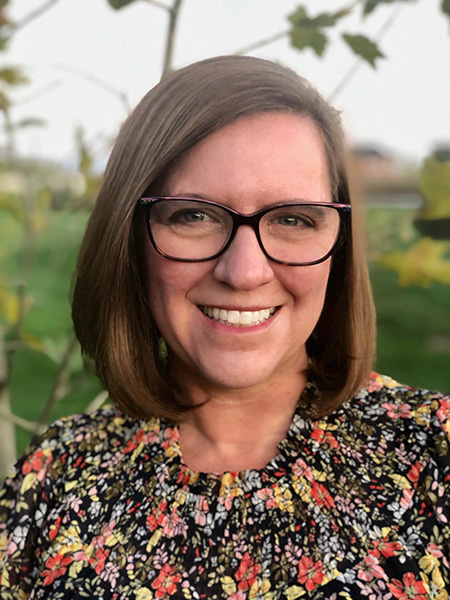Clinical Assistant Professor, Purdue University
2021 ASHFoundation Clinical Research Grant Recipient
“Validating a Sentence Diversity Priming Task as a Dynamic Assessment”

What led you to pursue this research?
Early in my career, I worked in public schools and saw a lack of evidence-based practice, especially in child language. Back in the mid-to-late 90s, there wasn’t much research available, and even with a lighter caseload than clinicians have today, it was hard to find the time to apply what little evidence existed. That frustration led me to pursue a PhD because I was committed to making evidence-based practice more accessible and clinically feasible.
During my PhD at Arizona State University, I worked with Pam Hadley in her lab, in a preschool setting, and in a language and literacy clinic. I fell in love with child language and specific language impairment—it combined everything I was passionate about. But I also saw how complex implementing evidence-based practice could be, which inspired me to focus my research on supporting clinicians and making research more applicable to real-world practice.
What problem are you hoping your work will solve going forward?
I’m developing a dynamic assessment tool as most child language assessments are static—they provide a snapshot of where a child is at a given moment but don’t show what the child is capable of with support. A dynamic assessment helps identify a child’s true potential by exploring what they can do with varying levels of assistance.
Our approach uses graduated prompting to offer different levels of support and identify the child’s “leading edge”—what they’re almost ready to do independently but can currently achieve with some guidance. This tool can also serve as a progress monitoring tool, especially for late talkers at risk for persistent language disorders. Since some late talkers catch up and others don’t, it’s hard to predict which children need intervention without a tool like this.
Without this information, children may not get the right treatment. I often compare it to medicine—while child language isn’t quite the same, I wouldn’t want a physician to choose treatments without data to guide their decisions. This tool focuses on early intervention and preschool because the earlier we can identify and support these kids—before kindergarten—the better their outcomes.
How are you approaching this work?
The task is designed as an interactive animated storybook, making it natural and engaging for kids. Even before COVID-19, we had started administering it remotely. It was originally developed for a project where [Pam Hadley] wanted to collect data at 30 months of age without asking families to come in for another visit. So, we designed it as a remote language sample tool where families used iPads or laptops, with caregivers acting as the interactors while the child talked about the animations.
But when we began considering it as a dynamic assessment tool, we realized that having caregivers follow the structured prompting hierarchy was tricky. The prompts are very specific, and small changes in wording can affect how a child responds. So, for the ASHFoundation project, we are validating it as a clinical tool by having clinicians administer it in both lab and daycare settings, allowing us to compare both approaches.
We collected data at 30 and 36 months to see if changes in the children matched their performance on the prompting hierarchy and their language skills. We’ve transcribed and coded the data, and now we’re in the analysis phase—hopefully, we’ll have results this summer.
How did the ASHFoundation help you get this research started?
When we applied for the research grant, I was a visiting professor at the University of Illinois and didn’t have research funding to move this project forward. But the ASHFoundation funding made it possible. It not only supported the project itself but also allowed us to bring in graduate student clinicians who we felt could successfully administer the task just as a working clinician would likely be able to.
Another big contribution was that, even though we’re still analyzing the data, the ASHFoundation funding helped us create an open-source website during the first year of the project. The site houses the task, the examiner manual, and the record forms—all freely accessible. I wouldn’t have been able to get that done without the ASHFoundation’s support. I really want this tool to be clinically useful, so we spent a lot of time figuring out how to make it open-source and accessible while still protecting our intellectual property.
We officially launched the website at the ASHA Convention in 2023 with a presentation introducing the task, explaining how we see it being used, and providing access to the website with the examiner manual and record forms. Without the ASHFoundation’s support, none of that would have been possible.
View More Recipient Spotlights